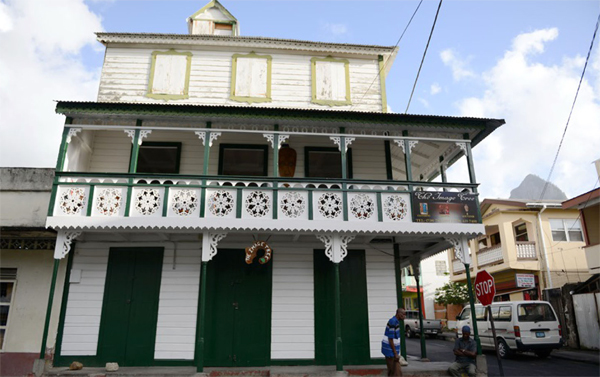
WHILE I have promised to continue the People’s Manifesto, I want to lay the platform as to how important it is to understand our history and to observe the interface of history with statistics and to craft policy from that perspective.
Just recently, the Central Bank Governor of Trinidad and Tobago was fired by the Acting President. Mr.Rambaran had unfortunately been viewed by some as a by- product of the Caribbean phenomenon termed political ethnicity. Many viewed his appointment more as a result of political expediency as against technical suitability. However before his departure, he declared that Trinidad and Tobago had suffered four consecutive quarters of negative economic growth and was thus now officially in recession.
The present Minster of Finance, who is a civil engineer, responded tersely by saying that he was not informed beforehand on this economic position and the Central Bank Governor, as the Trinis would say was ‘ out ah place’. The Central Statistical Office then jumped in to say that their information is to the contrary and that their figures are not showing any negative growth. Interestingly, nobody took on the CSO, and the government proceeded to announce a new body called the National Statistical Institute.
Saint Lucia is blessed to have an excellent Statistics Department, led by the fearless Edwin St. Catherine, a highly regarded statistician in the Caribbean. Unfortunately while we have the statistical information, it is not being used in the development of national policy. I have over the last few months been reading as much as I could on the history of Saint Lucia. I have found three sources to be of great interest. These books are as follows:
• ST. LUCIA – Historical, Statistical and Descriptive – Henry H. Breen – 1844
• The History of the Labour Movement in St Lucia 1945-1974 – George F. L. Charles
• A History of St Lucia Harmsen, Ellis, Devaux
While I am definitely not a Social Scientist, I found an interesting connectivity with migration and population growth that explained why we have such a young population. I have found a causal relationship among unemployment, migration and population growth. When the sugar industry collapsed in 1949/50, there was a wave of migration to British Guyana, French Guyana, Curacao, UK, and the USA. Between the 1950s to 60s it is estimated that about 10,000 Saint Lucians moved to the UK. The migration was predominantly the male population, as the men moved looking for employment and would send remittances home, which grew to over $ 1.2 million in 1962. The decrease in the male population caused a slowdown in the growth of the population.
It was the advent of the banana industry, which totally replaced sugar in 1963, and the Immigration Act of 1962, that slowed migration dramatically with the resultant effect of more men on the island and the subsequent increase in population. This was coupled with increased health facilities that reduced mortality. From 1960 to 1970 the population growth moved from 0.95%yr. to 1.54%yr. an increase of 62%. The population growth in that decade has caused this young population of 77 percent under the age of 50 years. However the advent of family planning and increase in telecommunication technology in the 1980’s caused the second wave of birth reduction. From 1980 to 2014 the population growth had moved from 1.4 %/yr to 0.73 % /yr a decrease of some 52%. The hypothesis that is presented is that the successes in the banana industry slowed the rate of migration and contributed to a spike in population growth which has caused this young population within Saint Lucia.
Attitudes towards large families have also changed, and thus a government has to look at statistics as the platform for policy creation. We were building primary schools without looking at what was happening with the population growth, and now we have many empty seats in these schools as the primary school population has dropped. Then if you are now seeing a reduction in the primary school population, eventually there will be a reduction in the secondary school students, so you have to begin to look at whether we need more secondary schools.
Policy must respond to statistical evidence, and thus while we have a Statistical Office that is the envy of most in the Caribbean the information has not been used to craft policy. We cannot continue to spend scarce resources without adequately researching the effectiveness of that investment. We continue to hear about plans for four lane highways, and yet there is complete silence as to how this will affect the travel time into Castries. The Americans call it ‘pork barrel spending’, a term that references an act during slavery when the plantation owner would bring barrels of salted pork as a reward for good behaviour and there was a mad rush among the slaves to get as many pieces as possible.
Let the maturity of the nation evolve, and let us use statistics to craft our policy going forward in 2016.











